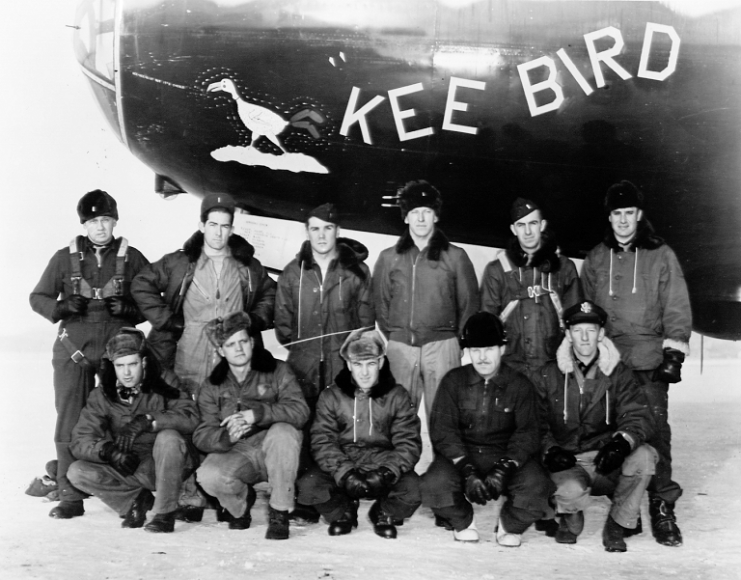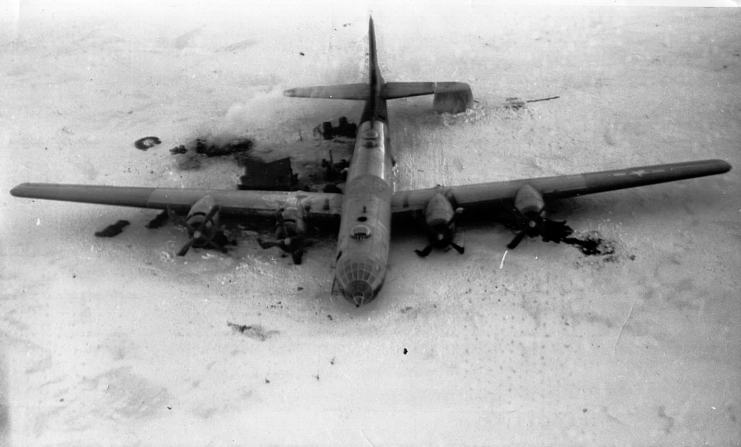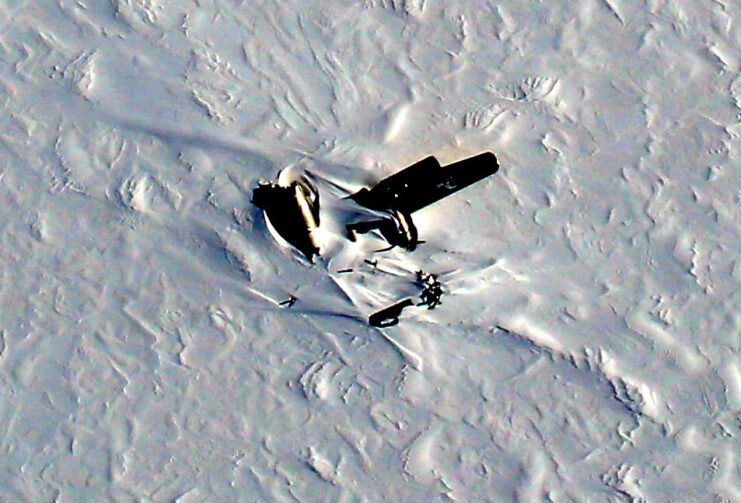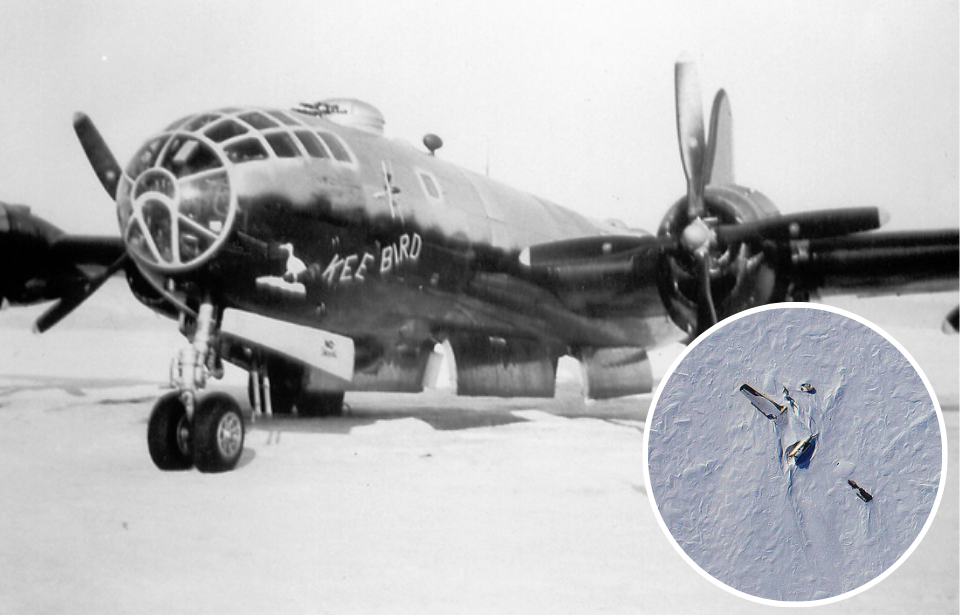On February 20, 1947, US Air Force Lt. Vern H. Arnett and his 11-man crew took off for what was meant to be a routine mission. It, like the six before it, was designated “top secret.” Arnett’s flight pattern that day included a trip around the Geographic North Pole, then home to Ladd Field, Alaska.
He’d been outfitted with enough fuel to keep him airborne for 26 hours, if conditions remained normal, but what happened next was anything but routine.
An ill-fated mission

The total mission time was expected to be 12-20 hours, with the Boeing B-29 Superfortress Kee Bird supposed to touch down at Ladd Field at 10:00 AM. What it didn’t include was an emergency landing in northwestern Greenland, which is what happened.
On February 21, 1947, the B-29, belonging to the 46th Reconnaissance Squadron, was forced to land on a frozen lake. The 46th was assigned to Ladd Field, near Fairbanks, Alaska, and its flights were designed to aid in the development of accurate polar navigation; survey and map out the Arctic; perform studies on weather patterns; conduct tests on men and their equipment in severe Arctic conditions; and conduct long-range photographic intelligence flights.
Unofficially, the squadron was also seeking out any Soviet military activity that might be occurring in desolate Arctic regions.
The crew of the downed Kee Bird evacuated the aircraft and were rescued, leaving the B-29 behind in the Arctic tundra, where it remained undisturbed for 47 years.
Attempting to rescue the B-29 Superfortress Kee Bird

It wasn’t until July 1994 that the Kee Bird Limited Liability Company, a group of specialist aircraft restoration enthusiasts led by Darryl Greenamyer, arrived at the crash site, where they found the B-29 Superfortress in good shape.
Greenamyer and his team labored under the notion that they could restore the bomber to flight-worthy condition. They’d brought with them specialist tools and equipment, and spent months in transit, bringing whatever extra parts were needed from US military bases in Greenland to complete the task they’d set for themselves. In the summer months, they also brought in an engine hoist and an engine, four new propellers, new tires and a bulldozer.
The plan was that, upon making Kee Bird airworthy, they’d simply take off from the lake and fly the bomber to Thule Air Force Base, Greenland, where they’d finish the restoration, before returning it to the United States. They’d have accomplished this, if inclement weather hadn’t forced them to leave the site.
Greenamyer wouldn’t bring his team back until May 1995.
B-29 Superfortress Kee Bird becomes engulfed in flames

The repairs Darryl Greenamyer had undertaken the year prior were finally finished, and the B-29 Superfortress was slated to take off from the frozen lake on May 21, 1995.
The team employed a bulldozer to construct a makeshift runway out of the ice and snow, and with the engines on and the turbines spinning, they were prepared for takeoff when they discovered a gas leak in the auxiliary power unit fuel tank. The fuel was falling into the fuselage, culminating in a widespread conflagration that soon engulfed the rest of Kee Bird.
The crew fought the fire, but failed, and the blaze kept going, burning not only the fuselage, but also the tail. The damage was so extensive that Greenamyer and his team were forced to abandon their attempt to save the B-29.
More from us: A Boeing B-29 Superfortress Carrying An Atomic Bomb Once Crashed In California
Want War History Online‘s content sent directly to your inbox? Sign up for our newsletter here!
It was believed that, once the spring thaw came, Kee Bird would disappear into the icy depths of the lake upon which it sat. However, to this day, it remains atop the ice.
